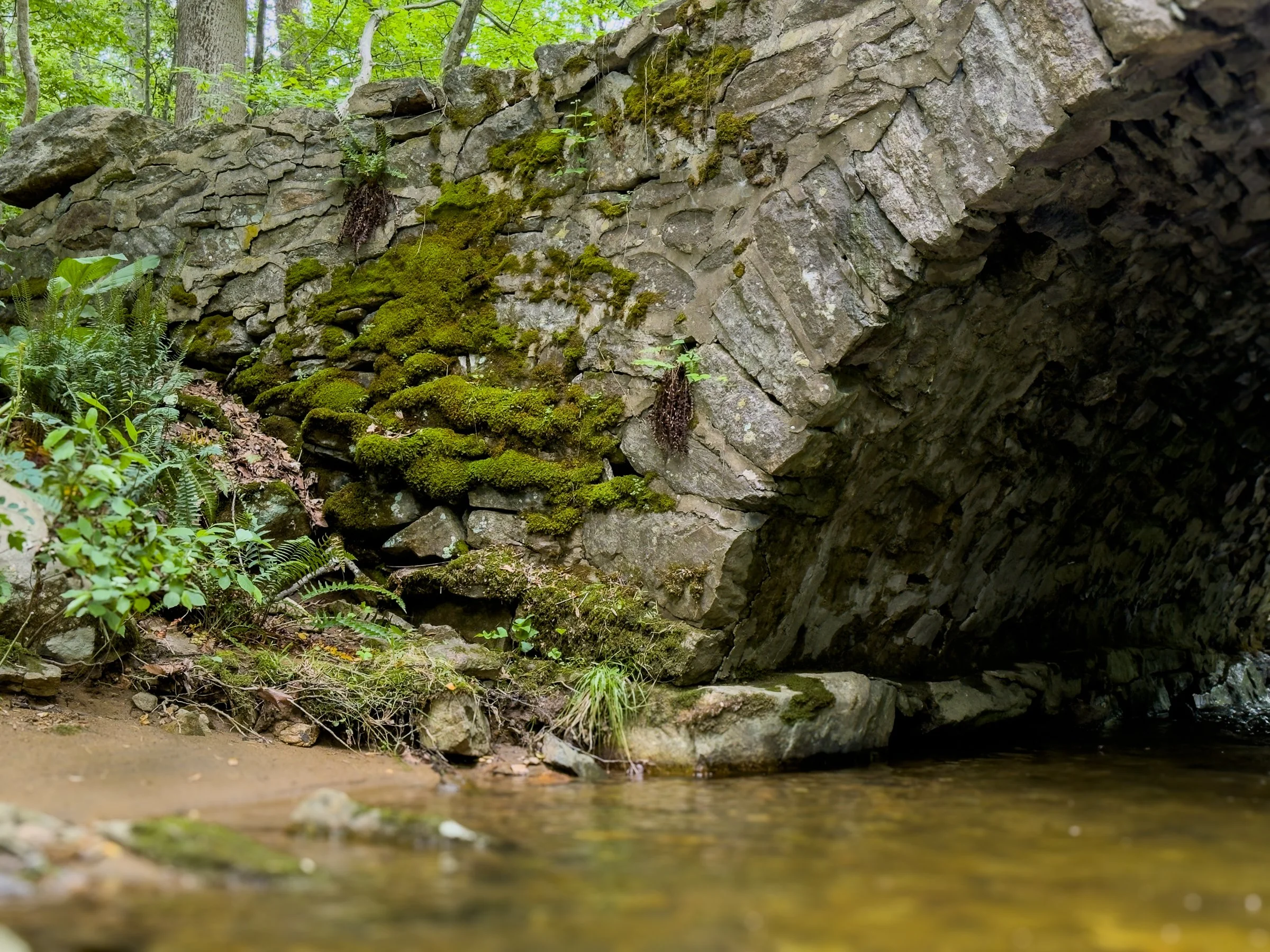
Hollow Brook Bridge Campaign
Design, Strategy, and Preservation for a Historic Stone Arch
A historic restoration campaign rooted in care, clarity, and community.
I led the digital strategy, designed the full campaign site, and helped shape a preservation-first plan for one of Tewksbury’s most significant landmarks.
Preservation with Purpose
The Hollow Brook Bridge is a dry-laid, mortared stone arch located on the old section of Fairmount East in Tewksbury Township. Built in the late 19th century, the bridge features a single-span segmental arch composed of locally quarried limestone. The arch spans 16 feet 11 inches with a skew of approximately 18 degrees, and the overall bridge depth measures 22 feet 6 inches from parapet to parapet along the skew. It is one of the last intact structures of its kind in Hunterdon County.
After decades of deferred maintenance, the bridge began showing signs of serious structural failure. Mortar loss, vegetation growth, undercutting from Hollow Brook, and settlement within the spandrel walls have compromised its stability. While the bridge remains eligible for the National Register of Historic Places, its condition prompted proposals that would have permanently altered or partially destroyed the structure. One such plan included installing a concrete cap over the deck and using Portland cement to patch visible damage—treatments that would violate the Secretary of the Interior’s Standards and undermine its historic integrity.
This campaign was created in direct response. Rather than pursue a short-term repair that risked irreversible harm, we developed a preservation-first strategy rooted in historic documentation, compatible materials, and expert review. We framed the bridge not just as infrastructure, but as cultural heritage—an artifact of local labor, material knowledge, and rural engineering, worth restoring with care.
The Hollow Brook Bridge Campaign aims to secure funding, public support, and regulatory alignment for a full restoration that honors the original structure. It’s about protecting a place that still holds meaning, and doing it the right way.
My Role
What I Brought to the Table
I led the digital side of the Hollow Brook Bridge Campaign, from the first conversations through launch. That meant designing the full webpage, writing every section, structuring the layout, and shaping the tone to reflect the seriousness of the work without overstating it.
The site needed to do two things at once: educate and advocate. Every part of the layout, from section order to mobile behavior, was built to support clarity and trust. Behind the scenes, I also developed the Notion workspace that held the campaign together. It tracked strategy, messaging, permitting, grant planning, and internal decision-making.
But my role went beyond just building a site. I helped reframe how the project was understood—from a patch job to a full preservation effort. Every element on the page was built to reflect that shift.
Design & Communication Strategy
Telling the Story Clearly
This project wasn’t just about structure. It was about tone. We had to share urgency without panic, explain complexity without confusion, and stand for preservation without pushing people away.
I approached the layout like a story. Section titles were clear and direct, written to feel human. The colors and typography were muted and natural, reflecting the materials of the bridge itself—stone, water, lichen, weather. The content followed a calm, grounded flow: what the bridge is, what’s at risk, what needs to happen, and how to get involved.
I designed for mobile first to make sure the message came through clearly on any screen. Every paragraph was written to balance technical detail with emotional clarity. It wasn’t about selling. It was about teaching, showing, and building trust.
Impact
What Changed
The campaign helped shift how people saw the bridge. It was no longer just a failing backroad crossing. It became what it always was—a historic structure that deserved to be preserved on its own terms.
The digital work built momentum around a preservation-first approach. It gave the board, potential funders, and the public a shared frame of reference, rooted in SHPO guidance and national standards. It helped spark early fundraising, laid out a plan for phased restoration, and supported future grant writing and partnerships.
The site itself became a tool. Board members used it to understand scope. Partners used it to align. And the broader community began to see the project not just as repair work, but as an act of long-term stewardship.
Explore the Campaign Site
Take a look at the full Hollow Brook Bridge Campaign site. It walks through what’s at risk, how the plan works, and why this bridge is worth saving.


